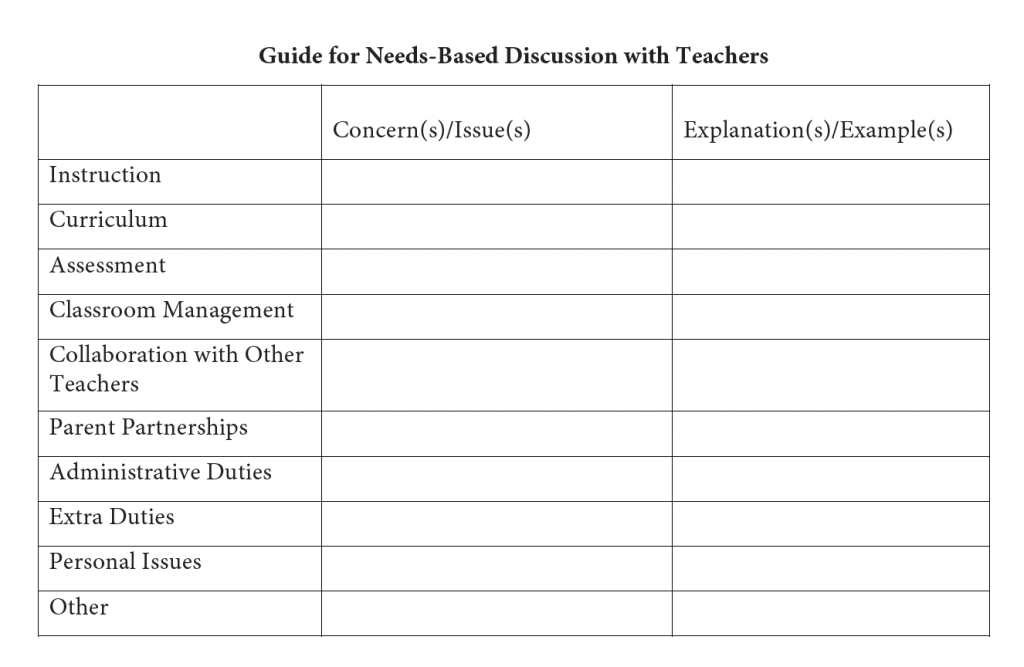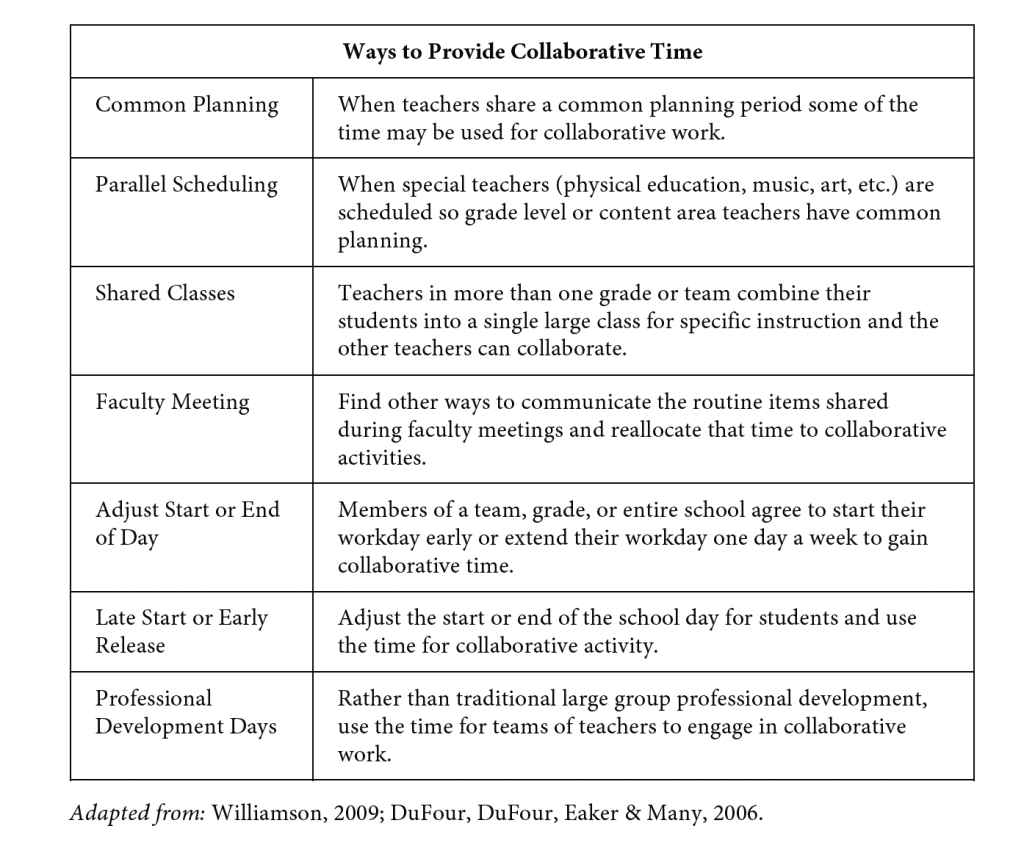By Ronald Williamson, EdD, and Barbara R. Blackburn, PhD
Teachers crave support, both tangible and intangible. Leaders must provide 360 support—assessing the needs of teachers individually as well as a group. When support is fragmented, teacher needs are not fully met, and they are not as motivated or effective as they might be.
The dilemma for a leader is that almost every staff member expects support but the definition of “support” and the specific needs will vary from person to person.
Support is most often not about supplies and materials or dealing with a complicated parent issue. It’s often having a sense of both physical and emotional safety. A teacher wants to be safe in their school and classroom, be supported when trying new curricular and instructional strategies, and trusted to make critical instructional decisions that support student success.
Let’s look at five areas that help us support teachers.
- Understand Their Needs
- Pay Attention to the Unsaid
- Prioritize What Matters
- Oblige When You Can
- Time Matters
Understand The Needs
To provide support, we need to understand what teachers actually need. It’s easy to assume we know what a teacher wants. For example, in one school we worked with, the principal needed someone willing to take on an extra duty. He assumed no one would want to, and after being turned down several times, he stopped asking. A week later, a teacher came to him and offered to take the duty if he would work with her to leave after students were dismissed when her children had doctors’ appointments. He was happy to oblige.
It’s not enough to simply ask teachers what they need. We need to probe into different areas to be sure we understand the full issue. For example, Barbara worked with a district in Texas where teachers were required to participate in 20 hours of professional development. The leadership team surveyed and then interviewed focus groups of teachers to figure out how to schedule the training. What emerged were several clear obstacles to a schedule everyone could support. After gathering data, they worked with their leadership team to design a plan that worked for teachers.
- Meetings would be held from 4-7 pm once a month.
- Supervised childcare would be provided in an adjacent room.
- High school family and consumer sciences students would provide a meal, paid for by the school.
- Teachers could leave to pick up their children or driver’s education teachers would provide transportation for teachers’ children if needed.
- Teachers would be able to swap their time for two professional workdays, as long as there were not required duties on the day of their choice.
The teachers overwhelmingly supported the plan, and the professional development was successful.
Pay Attention to the Unsaid
What is unsaid is often more important than what is said. In other words, there are times a teacher may not verbalize a need, perhaps because they minimize their own need or because they worry about the reaction of their leader or colleagues. Effective leaders recognize the importance of authentic listening and probing deeper to help understand needs (see Guide for Needs-Based Discussion with Teachers below). For example, we worked with a school in South Carolina focusing on literacy across the curriculum. The math teachers were quiet when asked how they would use a particular graphic organizer. They weren’t resistant, just non-responsive. The principal was frustrated and asked Barbara to talk with the teachers. After an informal discussion with the group, she returned to share what she had learned with the principal. Apparently, there had been a recent schoolwide focus on saving money which included not making copies unless absolutely necessary. In fact, teachers were on a paper allotment. The graphic organizer we recommended worked best when students were provided a copy. As one teacher said, “You told us what worked, but we can’t do that and meet our paper allotment.” The principal realized her resource mandate was negatively impacting instruction. She immediately told the teachers that she would run any copies of the graphic organizer out of her leadership allocation so they could implement the tool. The teachers were happy, students learned, and the problem was solved.

Prioritize What Matters
Often leaders feel a need to make an immediate decision, to respond to a request, or answer a question. It’s easy to fall into that trap. But, other times, what may be best is to take time to gather other perspectives, consider all the alternatives, and make a decision based on that thoughtful analysis.
Oblige When You Can
One key aspect of meeting needs is knowing what you can and what you cannot do. For example, one of your teachers may want to miss a meeting because their child is ill or has a medical appointment. You know it’s better to have them work all day rather than take a sick day. But district policy is clear about the obligation for meetings. Understand how to balance needs and policy and when you can make exceptions. And, if you can’t, always be able to explain your reasons. Remember, “it’s policy” or “that’s the way we do things” isn’t a good answer because almost always people know of an exception that has been made.
Time Matters
In many ways, time is your best support tool. Time is the biggest challenge for many teachers. Time management as well as balancing work and personal life is always a challenge.
But a major issue related to time is the school schedule. Often, one year’s schedule looks like the previous year. That means that some grades, or subjects, get the same advantages, or disadvantages year after year.
The structure of the school day can impact both morale and motivation. Teachers want a schedule that meets their instruction needs. At the elementary level that might be long uninterrupted instructional blocks, preferably in the morning. At middle school it may be a schedule that avoids sharing rooms or provides breaks throughout the day.
Almost always when discussing school schedules, we hear about the importance of collaborative time: time to work with colleagues on instructional tasks. Like all schedules, there are no perfect models. But there are lots of ways to provide time for collaboration (see Ways to Provide Collaborative Time below).
Regardless of the need, the first step is to start a conversation about scheduling needs with your teachers. Work to establish clear goals for the schedule. Value the collaboration and the conversation. Listen intently for needs. Assure a balanced review and commit to varying the schedule from year to year so that any negative impacts don’t affect the same teachers repeatedly.

Final Thoughts
Supporting teachers requires building a system that meets their needs. As leaders, our role is to remove barriers to success, which a good system will do.
Material excerpted from Improving Teacher Morale and Motivation: Leadership Strategies that Build Student Success by Ron Williamson and Barbara R. Blackburn. New York: Routledge Eye on Education, 2023.
Dr. Ronald Williamson is Professor Emeritus of Educational Leadership at Eastern Michigan University. He is a former principal, central office administrator and Executive Director of National Middle School Association (now AMLE).
Dr. Barbara R. Blackburn, a Top 10 Global Guru, is a best-selling author of more than 30 books, including the bestseller Rigor is NOT a Four-Letter Word, Rigor for Students with Special Needs, Rigor in Your School; 7 Strategies for Improving Your School, and Improving Teacher Morale and Motivation. An internationally recognized expert in the areas of rigor, motivation and leadership, she regularly collaborates with schools and districts for onsite and online professional development. Learn more at www.barbarablackburnonline.com.
TEPSA Leader, Spring 2024, Vol 37, No 2
Copyright © 2024 by the Texas Elementary Principals and Supervisors Association. No part of articles in TEPSA publications or on the website may be reproduced in any medium without the permission of the Texas Elementary Principals and Supervisors Association


